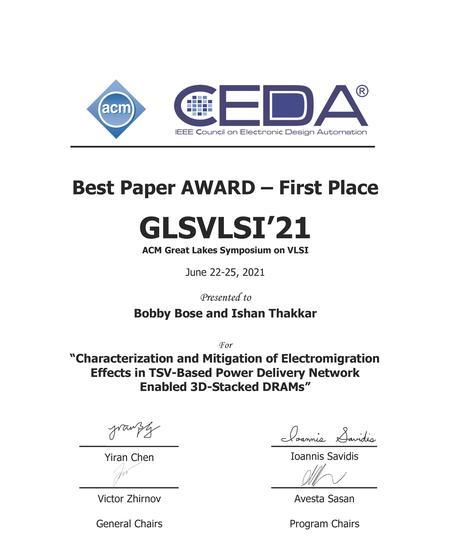Bobby Bose, a senior majoring in computer engineering, received a Best Paper Award at the Great Lakes Symposium on Very Large-Scale Integration 2021 (GLSVLSI’21). His paper, “Characterization and Mitigation of Electromigration Effects in TSV-Based Power Delivery Network Enabled 3D-Stacked DRAMs,” was co-authored with electrical and computer engineering assistant professor Ishan Thakkar, with whom he is conducting research as an undergraduate.
GLSVLSI’21 was held online June 22-25, 2021.
Abstract
With 3D-stacked DRAM architectures becoming more prevalent, it has become important to find ways to characterize and mitigate the adverse effects that can hinder their inherent access parallelism and throughput. One example of such adversities is the electromigration (EM) effects in the through-silicon vias (TSVs) of the power delivery network (PDN) of 3D-stacked DRAM architectures. Several prior works have addressed the effects of EM in TSVs of 3D integrated circuits. However, no prior work has addressed the effects of EM in the PDN TSVs on the performance and lifetime of 3D-stacked DRAMs. In this paper, we characterize the effects of EM in PDN TSVs on a Hybrid Memory Cube (HMC) architecture employing the conventional PDN design with clustered layout of power and ground TSVs. We then present a new PDN design with a distributed layout of power and ground TSVs and show that it can mitigate the adverse effects of EM on the HMC architecture performance without requiring additional power and ground pins. Our benchmark-driven simulation-based analysis shows that compared to the clustered PDN layout, our proposed distributed PDN layout improves the EM-affected lifetime of the HMC architecture by up to 10 years. During this useful lifetime, the HMC architecture yields up to 1.51× less energy-delay product (EDP).
